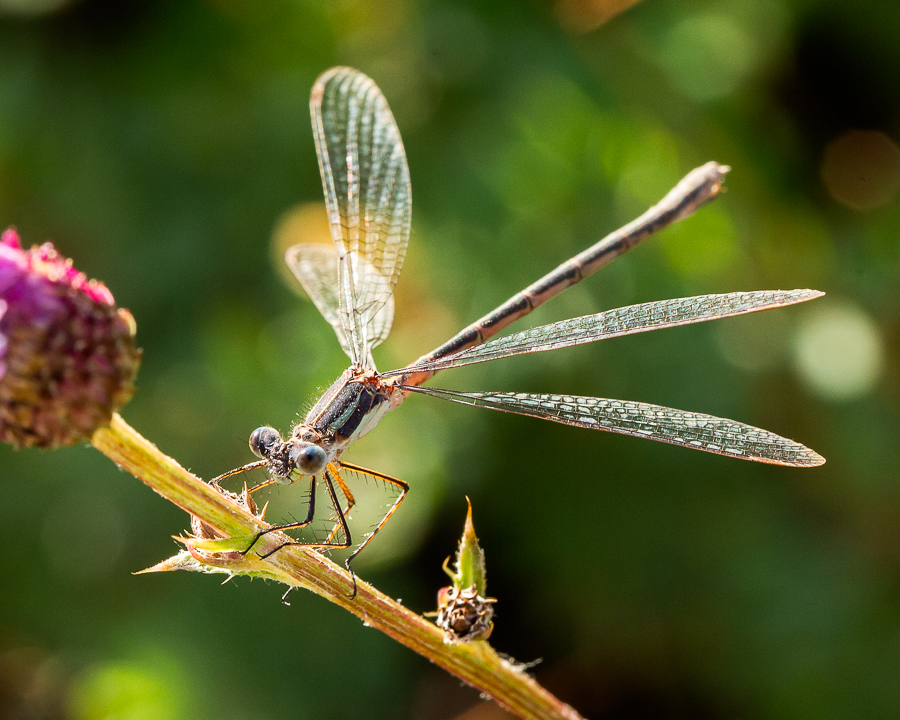A couple years ago I dove into a whole new realm of imagery, having purchased a macro lens allowing me the ability to get up close and personal with the smaller members of our natural world. It has been a fascinating visual journey taking a look at insects in a way not normally available to us with the naked eye. From a technical aspect, the work differs a good bit from the capturing of larger creatures, but challenges aside it is quite an amazing way to delve into learning about a wholly new (to me) area of nature.

One of my favorite local and easy places to get out into nature, if only for brief moments, is our little treasure that is Mud Lake. Once I had begun to grasp some of the basics of macro work, I headed out to see if I might have some fun with some of our more ancient neighbors that call the lake home, the damselflies and dragonflies. Seen here is a damselfly, but both species come from the order Odonata, which is estimated to be a couple hundred million years old.
Damselflies differ from Dragonflies in being generally a good bit smaller, topping out at only an inch and a half to two inches, where dragonflies are typically 2 inches or longer. While both are known for quite large eyes, damselflies have a space between theirs where dragonflies appear to have one large ocular node housing both eyes. Another easy way to distinguish the difference is in the wings in that while both have 2 sets, the hind sets differ in damselflies as they tend to taper towards the body where dragonfly wings tend to get larger.
Both species actually spend most of their lives in a submerged larval stage, with thousands of eggs being laid under water at a time. After hatching, much of their long period of development happens as an aquatic creature known as a nymph. This larval stage differs from other insects in that it is a more drawn out process with multiple stages as opposed to many insects that change once in a brief span of time to grow into their adult form. Nymphs transform over a span from months to up to 1-3 years with damselflies, and sometimes up to 6 years with certain species of dragonflies, the duration of which having them under the threat of becoming food for any number of larger critters. Interestingly, the adult phase of life is the shortest, as they only tend to live up to a few weeks once they emerge from their final larval stage and emerge from the water to mate and lay eggs that begin the whole process anew.
Watching the adults of both species buzz about the tall reeds on a summer evening provides a mesmerizing view as the sun lowers behind the mountains. Their aerial dance as they flit about the glittering light of golden sunshine reflected off the ripples of water lapping the shores can take one into a dream-like state as one contemplates the great and intricate machinery that makes up existence on this great planet of ours.
Originally published in The Mountain-Ear






